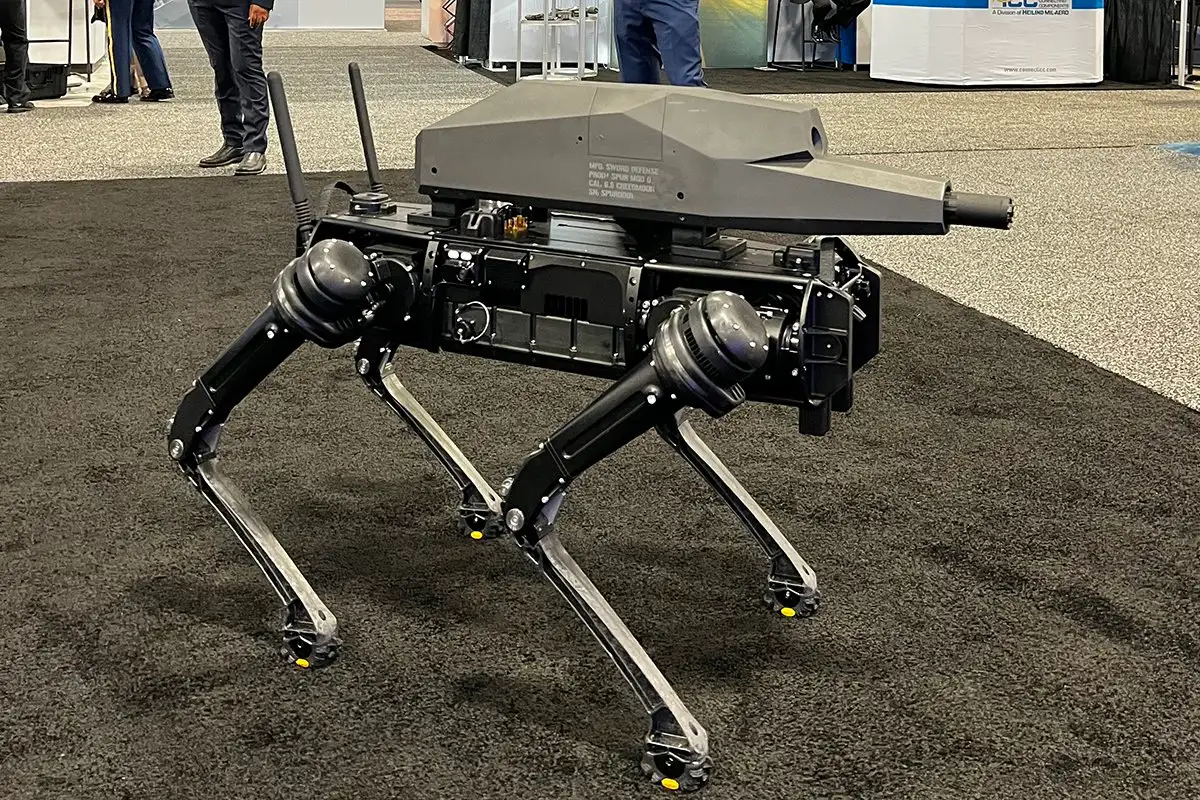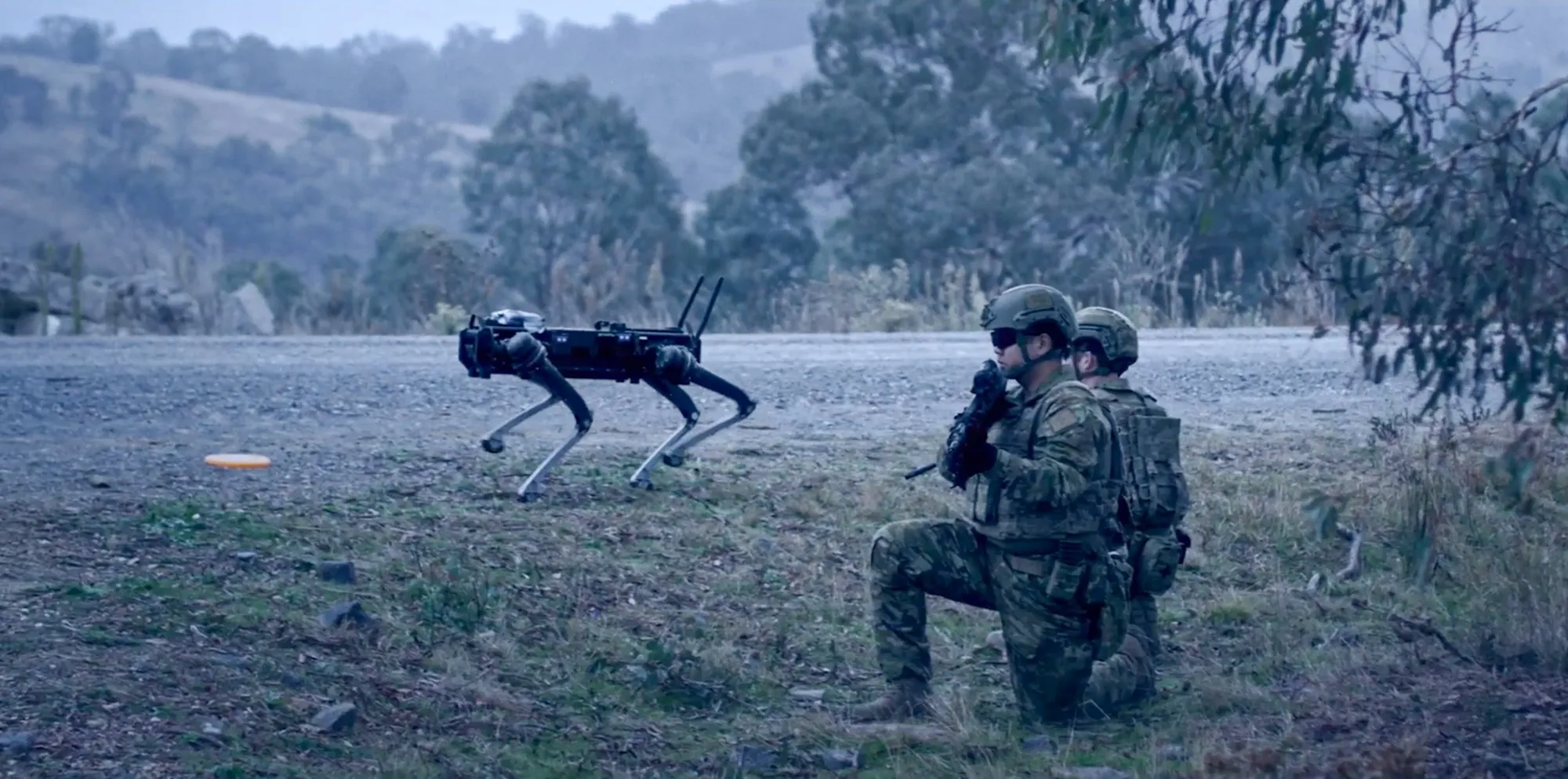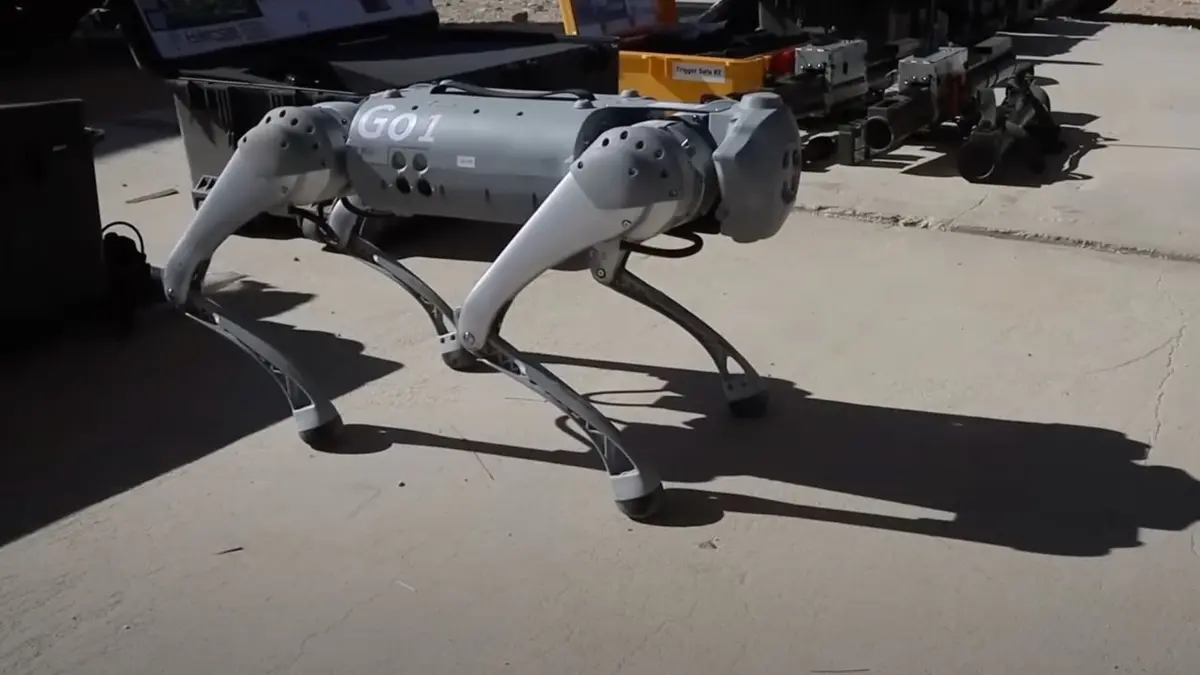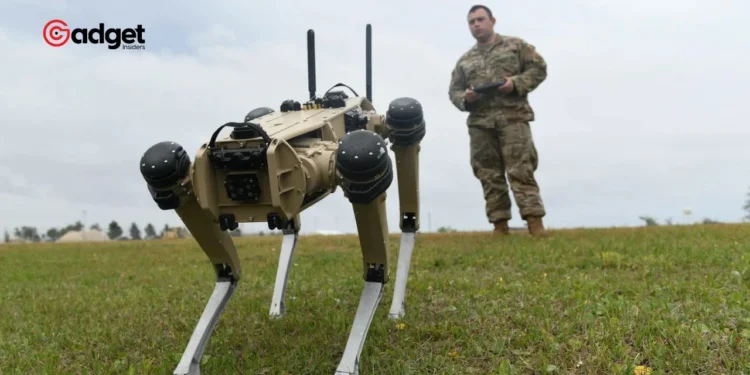The military landscape is continually evolving with advances in technology, and one of the most recent innovations under evaluation is the deployment of robotic “dogs” equipped with AI-aimed rifles. These unmanned ground vehicles, developed by Ghost Robotics and equipped with Onyx Industries’ gun systems, are currently undergoing testing by the United States Marine Forces Special Operations Command (MARSOC).
This development marks a significant shift in military strategy, reflecting a growing interest in leveraging robotic technology for enhanced security and operational efficiency.

The Emergence of Robotic Ground Vehicles in Military Applications
The use of unmanned aerial vehicles (UAVs) for remote engagements has been commonplace for over two decades, but the advent of robotic quadrupeds capable of ground operations opens new possibilities for military tactics.
These robotic dogs, known as Q-UGVs (quadrupedal unmanned ground vehicles), are not just simple machines; they are equipped with advanced AI systems capable of automatic target detection. However, they operate under strict human oversight, requiring a human operator to make the final decision to fire, thereby ensuring a controlled use of force.
This is terrifying. Robot dogs armed with AI-aimed rifles undergo US Marines Special Ops evaluation https://t.co/7mL8efZSSH
— Run DMc (@dimitrimckay) May 10, 2024
The Technology Behind Armed AI-Aimed Robotic Dogs
The armed Q-UGVs being tested by MARSOC are equipped with Onyx’s SENTRY Remote Weapon System (RWS). This system includes an AI-enabled digital imaging component that can autonomously detect and track potential targets such as people, drones, and vehicles.
The information is relayed to a remote operator who could be positioned anywhere globally, maintaining the crucial human element in decision-making processes regarding the use of lethal force.

Ethical and Operational Considerations
The potential to arm robotic dogs with lethal weapons raises profound ethical and strategic questions. While the technology could significantly reduce risks to human soldiers by performing reconnaissance and security duties in hazardous environments, the implications of deploying such systems are vast.
There is a concern that these robots might become more autonomous over time, potentially reducing human involvement in critical decision-making processes.
Public and Military Reactions to Robotic Combatants
The proliferation of robotic combatants has not been without controversy. An incident in July 2022 involving a gun mounted on a commercially available robotic dog went viral, sparking significant debate and leading several robotics companies, including Boston Robotics, to pledge not to weaponize their civilian models, with exceptions noted for military applications.
Furthermore, the potential domestic use of such technology by law enforcement agencies has also been met with public concern, emphasizing the need for clear policies and robust oversight.

The Future of Robotic Warfare
As the technology continues to develop, the military’s interest in these systems is likely to grow. The current evaluations by MARSOC are just the beginning of what could become a more common sight in modern warfare.
As noted by military analysts, the deployment of weaponized robotic dogs seems inevitable, and the duration of human involvement in their operational loop is a subject of ongoing debate.
The integration of robotic systems in military operations offers a glimpse into the future of warfare, where technology and human strategy intersect more profoundly than ever before.
As these technologies develop, it will be imperative for policymakers and military leaders to address the ethical challenges and ensure that their deployment is consistent with international law and the principles of warfare. The balance between technological advancement and ethical responsibility will define the next era of military engagement.










